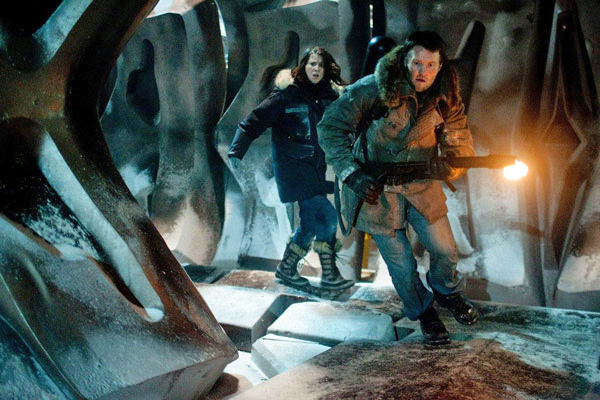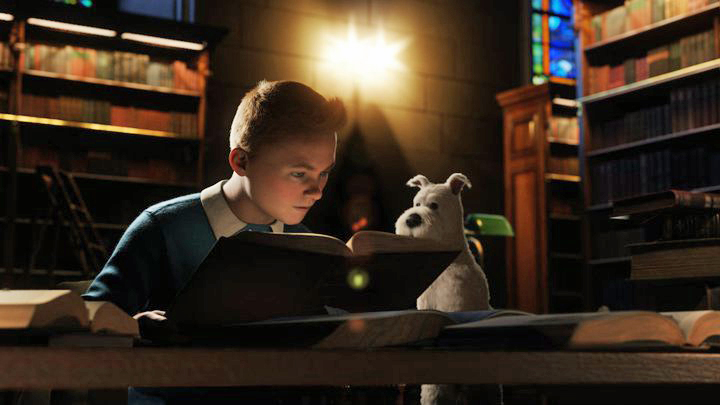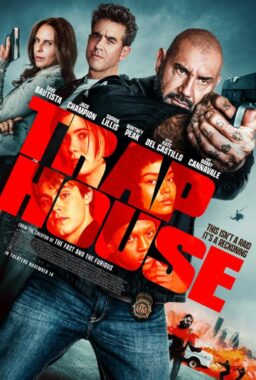Q. You said at the end of your Great Movies article about Kurosawa’s “Red Beard“: “I believe this film should be seen by every medical student.” It might please you to know that my old judo teacher Dr. Paul Harper, who was also a surgeon and researcher at the University of Chicago, required all his surgery residents to watch “Red Beard.” Just reading your description of some of those astonishingly beautiful scenes stirred deep emotional memories of the film. (Dave Fultz)
A. We are drowning in idiotic medical dramas, and “Red Beard” is a rare film that seriously considers a doctor’s philosophy about life, death and health care.
Q. Regarding the latest “Harry Potter” movie, I was surprised that you didn’t mention the fight scenes. This movie and most of the recent movies are seeming to trend to more, louder, faster, blurrier fight scenes. Is it just me or do the scenes get so confusing that we cannot keep up and give up on trying to follow the action. I find myself saying, “OK, fine, I’ll wait until it’s all over and see who wins.” It is wasted film time that could be better used to fill out the story. (Joel Michello)
A. Back in the years when fight scenes were staged using real actors and stunt men, they were choreographed to make sense. Now that they’re largely manufactured with computers, they approach abstract art: assemblies of images and sound cut together so quickly, and with so little attention to angle and POV, that no coherent understanding of them is possible. This is a great loss.
Q. Since 2001, The Academy of Motion Picture Arts and Sciences has held their Oscar ceremonies at the prestigious Kodak Theater located in Hollywood. Since the creation of AMPAS, for 78 consecutive years, every single Best Picture has allegedly been shot on Kodak film, thus the chosen name of the venue. Just curious if anyone ever bothered to inform them that last year’s Best Picture Winner, “The Hurt Locker,” was shot on Fuji film? (Kevin Fellman, Phoenix, AZ)
A. Gee, it turned out all right. That detail escaped my attention. Actually, the Kodak Theater was not named because of all the films shot on Kodak, but because Eastman Kodak generously helped support its construction.
Q. I have the utmost respect for your reviews Mr. Ebert. Frankly, I think you are brilliant in a lot of ways! On the other hand, I cannot and will not support anyone (buying books, etc.) who stands against Intelligent Design! (Mark Cooper)
A. You may run out of reading material, and have to turn to video games.
Q. Russell Crowe’s character in “The Next Three Days” couldn’t really be a schlepp, because that’s a verb of motion. But he could be a schlub, at least to start. Still, the movie lacks credibility because whoever heard of a schlub who
A. Now I feel like such a putz.
Q. I love film. All I have wanted to do was become a film critic. I thought I’d just go for it and ask if you could offer advice. I have a B.A. in English. I am a very good writer, or so I’ve been told. I was just hoping that maybe, just maybe, you’d read over this and throw a poor dog a bone. Any advice or tips, you could give would be expected. I just want to know what I need to do, what steps to take, how to get there. I’ve thought about a masters in film studies, but is it necessary? (Arthur Gordon)
A. There’s no easy answer, and not many salaried jobs. Many critics simple open their own websites, or contribute to others. I think the degree in English is invaluable. Further study is valuable for its own sake, but may not lead any more quickly to work. It would be for your own good, as it should be. Perhaps it might be wise to redefine yourself as a writer and not narrowly as a movie critic. Take someone like George Orwell as a role model.
Q. As I recall from all those years when you and Gene did your Top 10 special at the end of the year, you’d have many films in common, but never all. I was wondering if the two of you also shared notes beforehand — and, if so, whether one or both of you ever made changes to your lists so they wouldn’t be that similar? Or are you of a mind that a critic’s list should be his list, regardless of what anyone else is going to have on his or hers, and that it’s no sin if two guys writing for the same place, doing a podcast together, etc., have that much overlap on such a thing? This is why lists are frustrating. You want to be able to celebrate the best work of the year, but then you start contorting yourself to figure out what goes in and what stays out, how to rank things (if you don’t want to just go alphabetical), whether to consider a colleague’s rankings, etc. (Alan Sepinwall, Newark, N.J.)
A. You and a colleague are dealing with the problem of possible list overlap on your webcast. Gene had an iron-clad rule that we never discussed movies or lists in advance. We would send our lists to the producers, who would contrive a show rundown and give us each only the show segments we would be writing.
Q. In all the giant monster movies I’ve seen (“King Kong,” “Godzilla,” et al.), the monsters never have the urge to urinate and/or defecate. Even after eating people. Why is that? Do you know of any movies where they do, barring “Jurassic Park?” (Eric Hodek, Itasca, IL).
A. Obviously, they must be constipated. That’s why they’re so short-tempered.
Q. I’ve noticed that the official “At the Movies” website has been down for some time. Is this somehow related to your upcoming show? (Kevin Klawitter, Wadena, Minn.)
A. Buena Vista Television took down the site when it stopped producing “At the Movies.” That was fair enough. It contained all the show’s reviews over the years — everything by Siskel, myself, Richard Roeper, Michael Phillips, A.O. Scott, Ben Mankiewicz, Ben Lyons and various guest critics. I understand the archive has been preserved, and I hope it will find a new home somewhere on the web.
Q. It’s probably a coincidence, but I thought I’d check. In your review of “Burlesque,” you ask, “Where did they come from? Where will they go?” about the male dancers who suddenly appear. This isn’t an arcane reference to the title of Kitty Carlisle’s opening number in “Murder at the Vanities” (1934), which asks the same question about the dancers there? (Garry Koenigsberg, San Francisco CA)
A. I’m afraid not. Great minds think alike.












